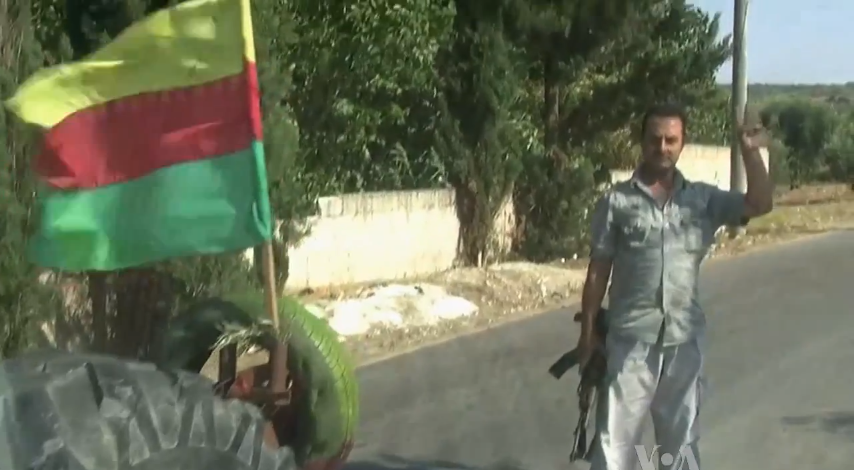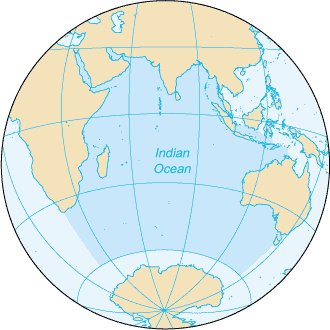|
Kurd Mountains
Kurd Mountain or Kurd Dagh ( ku, چیای کورمنج, Çiyayê Kurmênc; tr, Kürt Dağı, officially ; ar, جبل الأكراد) is a highland region in northwestern Syria and southeastern Turkey. It is located in the Aleppo Governorate of Syria and Kilis Province of Turkey. The Kurd Mountain should not be confused with the neighboring Jabal al Akrad, which is located further southwest towards the mediterranean coastline. Location and description Kurd Mountain is a part of the Limestone Massif of northwestern Syria. The mountain is a southern continuation into the Aleppo plateau of the highlands on the western part of the Aintab plateau. The valley of River Afrin surrounds Kurd Mountain from east and south and separates it from the plain of Aʻzāz and Mount Simeon to the east, and from Mount Harim to the south. The valley of River Aswad separates Mount Kurd from Mount Amanus to the west. In Syria, it is among the four "ethnic mountains" of western Syria, along with a ... [...More Info...] [...Related Items...] OR: [Wikipedia] [Google] [Baidu] |
Afrin, Syria
Afrin; ar, عفرين, Ifrīn. is a city in northern Syria. In the Afrin District, it is part of the Aleppo Governorate. The total population of the district was recorded at 172,095 people, of whom 36,562 lived in the town of Afrin itself. The town and district are named after the Afrin River. The city is split into two distinct halves by the river. As a result of Operation Olive Branch, the People's Protection Units withdrew after the city's encirclement from Afrin on 17 March 2018, and the Syrian National Army and Turkish Armed Forces captured Afrin the next day, bringing it under the Turkish occupation of northern Syria. While thousands fled as the SDF retreated, an estimated 50,000 to 70,000 people remained in Afrin city after the Turkish and Syrian National Army capture. After the Syrian National Army took control over the city, more than half of the Kurdish population fled the city. The remaining Kurds have faced harassment by local militant groups, including extortion, ... [...More Info...] [...Related Items...] OR: [Wikipedia] [Google] [Baidu] |
Alawite
The Alawis, Alawites ( ar, علوية ''Alawīyah''), or pejoratively Nusayris ( ar, نصيرية ''Nuṣayrīyah'') are an ethnoreligious group that lives primarily in Levant and follows Alawism, a sect of Islam that originated from Shia Islam. The Alawites revere Ali (Ali ibn Abi Talib), considered the first Imam of the Twelver school. The group is believed to have been founded by Ibn Nusayr during the 9th century. Ibn Nusayr was a disciple of the tenth Twelver Imam, Ali al-Hadi and of the eleventh Twelver Imam, Hasan al-Askari. For this reason, Alawites are also called ''Nusayris''. Surveys suggest Alawites represent an important portion of the Syrian population and are a significant minority in the Hatay Province of Turkey and northern Lebanon. There is also a population living in the village of Ghajar in the Golan Heights. Alawites form the dominant religious group on the Syrian coast and towns near the coast, which are also inhabited by Sunnis, Christians, and Ism ... [...More Info...] [...Related Items...] OR: [Wikipedia] [Google] [Baidu] |
Maabatli
Maabatli ( ar, معبطلي, Maabatli or ''Mobetan''), also known as Mabeta, is a town in northern Syria, administratively part of the Aleppo Governorate, located northwest of Aleppo in the center of Afrin District. Nearby localities include Afrin to the southeast, Rajo to the northwest and Jindires to the south. The town is also the administrative center of the Maabatli ''nahiyah'' of the Afrin District with a combined population of 11,741.General Census of Population and Housing 2004 . Syria Central Bureau of Statistics (CBS). Aleppo Governorate. Previously controlled by the [...More Info...] [...Related Items...] OR: [Wikipedia] [Google] [Baidu] |
Turkish Army
The Turkish Land Forces ( tr, Türk Kara Kuvvetleri), or Turkish Army (Turkish: ), is the main branch of the Turkish Armed Forces responsible for land-based military operations. The army was formed on November 8, 1920, after the collapse of the Ottoman Empire. Significant campaigns since the foundation of the army include suppression of rebellions in southeastern Turkey from the 1920s to the present day, combat in the Korean War, the 1974 Turkish invasion of Cyprus and the current Turkish involvement in the Syrian Civil War, as well as its NATO alliance against the USSR during the Cold War. The army holds the preeminent place within the armed forces. It is customary for the Chief of the General Staff of the Turkish Armed Forces to have been the Commander of the Turkish Land Forces prior to his appointment as Turkey's senior ranking officer. Alongside the other two armed services, the Turkish Army has frequently intervened in Turkish politics, a custom that is now regulated to ... [...More Info...] [...Related Items...] OR: [Wikipedia] [Google] [Baidu] |
Mandate For Syria And The Lebanon
The Mandate for Syria and the Lebanon (french: Mandat pour la Syrie et le Liban; ar, الانتداب الفرنسي على سوريا ولبنان, al-intidāb al-fransi 'ala suriya wa-lubnān) (1923−1946) was a League of Nations mandate founded in the aftermath of the First World War and the partitioning of the Ottoman Empire, concerning Syria (region), Syria and Lebanon. The mandate system was supposed to differ from colonialism, with the governing country intended to act as a trustee until the inhabitants were considered eligible for self-government. At that point, the mandate would terminate and an Sovereign state, independent state would be born. During the two years that followed the end of the war in 1918—and in accordance with the Sykes–Picot Agreement signed by United Kingdom, Britain and French Third Republic, France during the war—the British held control of most of Ottoman Iraq, Ottoman Mesopotamia (modern Iraq) and the southern part of Ottoman Syria (Palesti ... [...More Info...] [...Related Items...] OR: [Wikipedia] [Google] [Baidu] |
Yazidis
Yazidis or Yezidis (; ku, ئێزیدی, translit=Êzidî) are a Kurmanji-speaking Endogamy, endogamous minority group who are indigenous to Kurdistan, a geographical region in Western Asia that includes parts of Iraq, Syria, Turkey and Iran. The majority of Yazidis remaining in the Middle East today live in Iraq, primarily in the Governorates of Iraq, governorates of Nineveh Governorate, Nineveh and Duhok Governorate, Duhok. There is a disagreement among scholars and in Yazidi circles on whether the Yazidi people are a distinct ethnoreligious group or a religious sub-group of the Kurds, an Iranian peoples, Iranic ethnic group. Yazidism is the ethnic religion of the Yazidi people and is Monotheism, monotheistic in nature, having roots in a Ancient Iranian religion, pre-Zoroastrian Iranic faith. Since the spread of Islam began with the early Muslim conquests of the 7th–8th centuries, Persecution of Yazidis, Yazidis have faced persecution by Arabs and later by Turkish people, ... [...More Info...] [...Related Items...] OR: [Wikipedia] [Google] [Baidu] |
Shafiite
The Shafii ( ar, شَافِعِي, translit=Shāfiʿī, also spelled Shafei) school, also known as Madhhab al-Shāfiʿī, is one of the four major traditional schools of religious law (madhhab) in the Sunnī branch of Islam. It was founded by Arab theologian Muḥammad ibn Idrīs al-Shāfiʿī, "the father of Muslim jurisprudence", in the early 9th century. The other three schools of Sunnī jurisprudence are Ḥanafī, Mālikī and Ḥanbalī. Like the other schools of fiqh, Shafii recognize the First Four Caliphs as the Islamic prophet Muhammad’s rightful successors and relies on the Qurʾān and the "sound" books of Ḥadīths as primary sources of law. The Shafi'i school affirms the authority of both divine law-giving ( the Qurʾān and the Sunnah) and human speculation regarding the Law. Where passages of Qurʾān and/or the Ḥadīths are ambiguous, the school seeks guidance of Qiyās (analogical reasoning). The Ijmā' (consensus of scholars or of the community) ... [...More Info...] [...Related Items...] OR: [Wikipedia] [Google] [Baidu] |
Hanafi
The Hanafi school ( ar, حَنَفِية, translit=Ḥanafiyah; also called Hanafite in English), Hanafism, or the Hanafi fiqh, is the oldest and one of the four traditional major Sunni schools ( maddhab) of Islamic Law (Fiqh). It is named after the 8th century Kufan scholar, Abu Hanifa, a Tabi‘i of Persian origin whose legal views were preserved primarily by his two most important disciples, Imam Abu Yusuf and Muhammad al-Shaybani. It is considered one of the most widely accepted maddhab amongst Sunni Muslim community and is called the ''Madhhab of Jurists'' (maddhab ahl al-ray). The importance of this maddhab lies in the fact that it is not just a collection of rulings or sayings of Imam Abu Hanifa alone, but rather the rulings and sayings of the council of judges he established belong to it. It had a great excellence and advantage over the establishment of Sunni Islamic legal science. No one before Abu Hanifa preceded in such works. He was the first to solve the cases an ... [...More Info...] [...Related Items...] OR: [Wikipedia] [Google] [Baidu] |
Charcoal
Charcoal is a lightweight black carbon residue produced by strongly heating wood (or other animal and plant materials) in minimal oxygen to remove all water and volatile constituents. In the traditional version of this pyrolysis process, called charcoal burning, often by forming a charcoal kiln, the heat is supplied by burning part of the starting material itself, with a limited supply of oxygen. The material can also be heated in a closed retort. Modern "charcoal" briquettes used for outdoor cooking may contain many other additives, e.g. coal. This process happens naturally when combustion is incomplete, and is sometimes used in radiocarbon dating. It also happens inadvertently while burning wood, as in a fireplace or wood stove. The visible flame in these is due to combustion of the volatile gases exuded as the wood turns into charcoal. The soot and smoke commonly given off by wood fires result from incomplete combustion of those volatiles. Charcoal burns at a higher temper ... [...More Info...] [...Related Items...] OR: [Wikipedia] [Google] [Baidu] |
Olive
The olive, botanical name ''Olea europaea'', meaning 'European olive' in Latin, is a species of small tree or shrub in the family Oleaceae, found traditionally in the Mediterranean Basin. When in shrub form, it is known as ''Olea europaea'' 'Montra', dwarf olive, or little olive. The species is cultivated in all the countries of the Mediterranean, as well as in Australia, New Zealand, North and South America and South Africa. ''Olea europaea'' is the type species for the genus ''Olea''. The olive's fruit, also called an "olive", is of major agricultural importance in the Mediterranean region as the source of olive oil; it is one of the core ingredients in Mediterranean cuisine. The tree and its fruit give their name to the plant family, which also includes species such as lilac, jasmine, forsythia, and the true ash tree. Thousands of cultivars of the olive tree are known. Olive cultivars may be used primarily for oil, eating, or both. Olives cultivated for consumption ar ... [...More Info...] [...Related Items...] OR: [Wikipedia] [Google] [Baidu] |
Druze
The Druze (; ar, دَرْزِيٌّ, ' or ', , ') are an Arabic-speaking esoteric ethnoreligious group from Western Asia who adhere to the Druze faith, an Abrahamic, monotheistic, syncretic, and ethnic religion based on the teachings of Hamza ibn Ali ibn Ahmad and ancient Greek philosophers like Plato, Aristotle, Pythagoras, and Zeno of Citium. Adherents of the Druze religion call themselves " the Monotheists" or "the Unitarians" (''al-Muwaḥḥidūn''). The Epistles of Wisdom is the foundational and central text of the Druze faith. The Druze faith incorporates elements of Isma'ilism, Christianity, Gnosticism, Neoplatonism, Zoroastrianism, Buddhism, Hinduism, Pythagoreanism, and other philosophies and beliefs, creating a distinct and secretive theology based on an esoteric interpretation of scripture, which emphasizes the role of the mind and truthfulness. Druze believe in theophany and reincarnation. Druze believe that at the end of the cycle of rebirth, which is achie ... [...More Info...] [...Related Items...] OR: [Wikipedia] [Google] [Baidu] |







